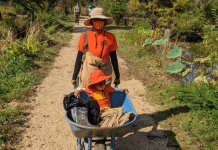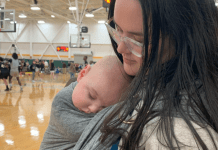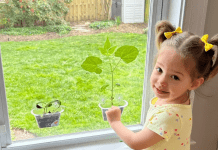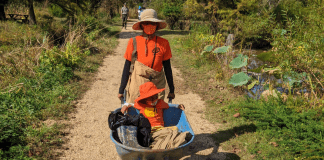I realize that “trauma-informed” is a bit of a buzzword right now. As a foster parent, I spent the last few years learning how to parent children who come from hard places. This means learning, often through trial by fire, the effects of trauma on the brain.
It has been a long road of trying to learn from resources, including the experiences of veteran foster/adoptive parents. Not to mention attempting to implement that wisdom, inevitably making mistakes, (often out-right failing) battling feelings of overwhelm, and thoughts of “Holy cow what have I done? I’m not cut out for this.” Sometimes (ahem, oftentimes) we feel shame from all of those feelings, and then try again.
Lather, rinse, repeat.
That’s why the title of this article is, How Trauma-Informed Parenting “is changing” the way I Parent and not “has changed.” I’m a work in progress, stumbling along and trying to love the kids that have been entrusted to my care.
But what I’m discovering about trauma-informed parenting is changing the way I want to parent all my kids – not just the ones from hard places.
The Brain
Before I get into the practical parts of this, I want to walk you through a very simplistic hand model of the brain. I first learned this from Dr. Dan Siegal and many of the following tips are from his books and other similar books on connected parenting.
Make a fist with your hand by putting your thumb across your hand and wrapping your fingers around it.
The fingers represent your frontal cortex, which is the “thinking” part of your brain. Your thumb represents the amygdala, which is the instinctual or “feelings” part of your brain.
This fist represents an integrated and regulated, fully functioning brain.
Now flip your fingers up to reveal your thumb.

When we encounter stress, we can easily “flip our lid,” which makes us lose access to our ability to reason because our “feelings” brain takes over. We become dysregulated, fearful, and stuck in fight, flight, freeze, or fawn mode. (See image below for an explanation of those terms).
Kids hang out in their lower brain A LOT because their higher brain is still under construction. It doesn’t take much for little minds’ lids to get flipped, regardless of their trauma history. Anyone that has experienced a toddler tantrum knows this to be true.
In order for us to access the thinking brain, we have to find ways to reconnect it with the feelings brain. Until we can do this, we lack the ability to reason. I love this Stress Responses Graphic.
By design, what we want and need in a moment of dysregulation is safety. The best way to get that is through connection.
What We All Need
“We all are born into the world looking for someone looking for us, and we remain in this mode of searching for the rest of our lives.”
– Dr. Curt Thompson
I heard this story once about a guy whose luggage was lost at the airport. He goes to the baggage claim office and not so kindly unleashes his frustration on the agent at the front desk. The baggage claim agent was not phased. In fact, his response to this angry client is a lesson to us all. Instead of getting defensive, meeting anger with anger, he took a deep breath, looked at him in the eyes, and with all sincerity said, “Those b@$tards!”
His response was so unexpected and disarming, the angry passenger couldn’t help but breathe a sigh of relief. Because of this unexpected validation, his anger diffused, and they were able to work on a solution together.
We are adults with fully developed brains. We have these amazing skills and coping mechanisms to handle stress before we react. And still, we flip our lids sometimes.
In those moments, underneath all the emotions, we want to feel seen and heard in all our mess and loved and accepted anyways. We need it for survival. It’s literally how our brains are designed to work.
Put Yourself In Their Shoes
Imagine you’re angry. Something happened at work, with your family, or with your kids, and it really pushed your buttons. You feel the need to vent or maybe punch a wall. You know you need to cool down, but not before telling someone how you feel. So you call your spouse or a friend or your mom. At that moment, you want to feel heard and understood and, typically, the last thing you want is practical help. In fact, if you hear anything remotely close to a solution to your problem, you might redirect all that anger inside of you on your unsuspecting confidant.
When we’re in “vent mode,” we don’t want anyone trying to fix our problem. And if we have flipped lids, we physically can’t receive any sort of instruction.
Yet oftentimes, this is exactly what we expect our kids to do.
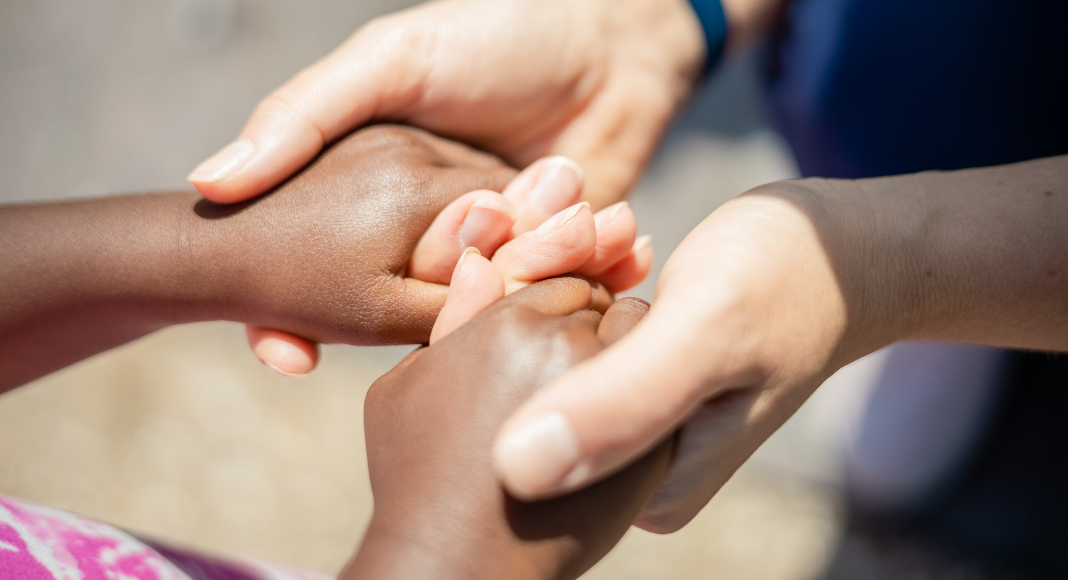 Poking the Lizard
Poking the Lizard
The first thing I learned from trauma-informed parenting (or simply parenting a toddler) is the futility of addressing behaviors “in the moment” of distress. Kids can’t learn when emotions are high. And often when we try to, it backfires and escalates the situation even more.
We get tempted to “poke the lizard,” which is a phrase that comes from a nickname used for the “feelings” brain, which is the “reptilian” brain. It’s called this because it’s the first part of the brain to develop and is responsible for our basic functions, instincts, and survival. This is the most developed part of a child’s brain and this is what they (and we) rely on in moments of stress.
When kids “flip their lids,” they need help accessing their higher brain. Kids get stuck there VERY easily. And when that happens, their capacity to think and reason is greatly diminished – think a caged animal who is just trying to survive and get free.
Foster parents get extra practice avoiding “poking the lizard” with kids who don’t feel safe because they can easily get into a high state of stress and survival mode. It doesn’t take much for them to feel triggered. So in those moments, my goal changes from addressing the behavior to helping them feel safe so they can access their higher brain again.
Rethinking “Discipline”
Discipline means to teach. And, much to my surprise, when I was a new parent, most of the time it’s nearly impossible to “discipline” effectively in the heat of the moment. This means I have to be really intentional about teaching, training, equipping my kids with tools, and connecting with them in moments of calm and joy. Most teaching or “discipline” happens outside of the moment where correction is most needed.
In the moment of distress, we should focus on connection instead of correction. If they feel safe, known, and loved, they will be able to reconnect to their higher brain and be able to hear and receive correction later. They will learn better when your correction comes from a place of relational trust versus authoritarian fear.
In the next article, I will share more practical tips for how to connect with your kids, co-regulate, and de-escalate.


